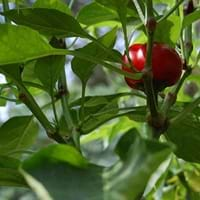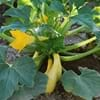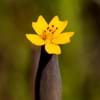Life Span
Perennial
Perennial
Origin
Mexico, Central America, South America
Mexico, Central America, South America
Types
Not Available
Bigleaf hydrangea, Hortensia, Smooth hydrangea, Oakleaf hydrangea, Annabelle
Number of Varieties
Not Available
Habitat
Temperate Regions
Forest edges, Hillside, Woods
USDA Hardiness Zone
5-12
11-15
Sunset Zone
A1, A2, A3, H1, H2, 1a, 1b, 2a, 2b, 3a, 3b, 4, 5, 6, 7, 8, 9, 10, 11, 12, 13, 14, 15, 16, 17, 18, 19, 20, 21, 22, 23, 24
21,22
Habit
Oval or Rounded
Vining/Climbing
Flower Color
White
Yellow
Flower Color Modifier
Bicolor
Bicolor
Fruit Color
Red, Green
Yellow, Orange Red
Leaf Color in Spring
Sea Green
Green, Dark Green
Leaf Color in Summer
Dark Green
Green, Dark Green
Leaf Color in Fall
Dark Green, Black
Green, Dark Green
Leaf Color in Winter
Green
Green, Dark Green
Leaf Shape
Lanceolate
Oblovate
Plant Season
Spring, Summer, Fall
Spring, Summer, Fall
Sunlight
Full Sun
Full Sun
Type of Soil
Loam
Loam, Sand
The pH of Soil
Neutral
Neutral
Soil Drainage
Well drained
Well drained
Bloom Time
Indeterminate
Indeterminate
Tolerances
Drought
Drought
Where to Plant?
Container, Ground, Pot
Container, Ground
How to Plant?
Seedlings
Seedlings, Stem Planting
Plant Maintenance
Medium
Medium
Watering Requirements
Average Water Needs, Do Not over Water
Not Available
In Summer
Lots of watering
Average Water
In Spring
Moderate
Moderate
In Winter
Average Water
Average Water
Soil Type
Loam
Loam, Sand
Soil Drainage Capacity
Well drained
Well drained
Sun Exposure
Full Sun
Full Sun
Pruning
Remove damaged leaves, Remove dead branches, Remove dead leaves
Remove damaged leaves, Remove dead branches, Remove dead leaves
Fertilizers
All-Purpose Liquid Fertilizer
All-Purpose Liquid Fertilizer
Pests and Diseases
Aphids, Armyworm, Borers, Red blotch, Stink bugs, Worms
Red blotch
Plant Tolerance
Drought, Salt
Drought
Flowers
Insignificant
Showy
Flower Petal Number
Single
Single
Fragrant Bark/Stem
No
Yes
Foliage Texture
Medium
Medium
Foliage Sheen
Glossy
Matte
Evergreen
No
Semi-Evergreen
Attracts
Aphids, Beetles
Butterflies
Allergy
Eye irritation, Skin irritation
Chest tightness, Diarrhea, Dizziness, Nausea, Vomiting
Aesthetic Uses
Beautification, Showy Purposes
Not Available
Beauty Benefits
Not Available
Not Available
Edible Uses
Yes
Not Available
Environmental Uses
Air purification
Air purification
Medicinal Uses
Vitamin A, Vitamin C
Fever, Kidney problems, Urinary tract problems
Part of Plant Used
Fruits
Flowers, Root
Other Uses
Used as a nutritious food item, Used for its medicinal properties
Not Available
Used As Indoor Plant
Yes
Not Available
Used As Outdoor Plant
Yes
Yes
Garden Design
Container, Edible, Herb / Vegetable, Tropical
Edible, Herb / Vegetable
Botanical Name
CAPSICUM annuum 'Cherry Pick'
LYCOPERSICON esculentum 'Striped German'
Common Name
Cherry Pepper, Cherry Pick Pepper
Striped German Tomato
In Hindi
चेरी मिर्च
Hydrangea
In German
Kirsche Pfeffer
Hortensie
In French
cerise Pepper
Hortensia
In Spanish
cereza de la pimienta
Hortensia
In Greek
Cherry πιπέρι
υδραγεία
In Portuguese
cereja pimenta
Hortênsia
In Polish
Cherry Pieprz
Hortensja
In Latin
Cherry Pepper
Hibiscus
Phylum
Magnoliophyta
Not Available
Class
Magnoliopsida
Not Available
Order
Solanales
Not Available
Family
Solanaceae
Solanaceae
Genus
Capsicum
Not Available
Clade
Asterids, Eudicots
Not Available
Tribe
Capsiceae
Not Available
Subfamily
Not Available
Not Available
Number of Species
Not Available
Not Available
Difference Between Cherry Pepper and Striped German Tomato
If you are confused whether Cherry Pepper or Striped German Tomato are same, here are some features about those plants to help you choose better. Many people think that these two plants have the same characteristics, but one can see Cherry Pepper and Striped German Tomato Information and learn more about it. Fertilizers required for proper growth of Cherry Pepper are All-Purpose Liquid Fertilizer, whereas for Striped German Tomato fertilizers required are All-Purpose Liquid Fertilizer. Hence, one should know the basic difference between Cherry Pepper and Striped German Tomato if you are planning to have them in your garden to enhance its beauty.
<
Flowering PlantsImportance of Cherry Pepper and Striped German Tomato
Want to have the most appropriate plant for your garden? You might want to know the importance of Cherry Pepper and Striped German Tomato. Basically, these two plants vary in many aspects. Compare Cherry Pepper and Striped German Tomato as they differ in many characteristics such as their life, care, benefits, facts, etc. Every gardener must at least have the slightest clue about the plants he wants to plant in his garden. Compare their benefits, which differ in many ways like facts and uses. The medicinal use of Cherry Pepper is Vitamin A and Vitamin C whereas of Striped German Tomato is Fever, Kidney problems and Urinary tract problems. Cherry Pepper has beauty benefits as follows: Not Available while Striped German Tomato has beauty benefits as follows: Not Available.
Compare Facts of Cherry Pepper vs Striped German Tomato
How to choose the best garden plant for your garden depending upon its facts? Here garden plant comparison will help you to solve this query. Compare the facts of Cherry Pepper vs Striped German Tomato and know which one to choose. As garden plants have benefits and other uses, allergy is also a major drawback of plants for some people. Allergic reactions of Cherry Pepper are Eye irritation and Skin irritation whereas of Striped German Tomato have Chest tightness, Diarrhea, Dizziness, Nausea and Vomiting respectively. Having a fruit bearing plant in your garden can be a plus point of your garden. Cherry Pepper has showy fruits and Striped German Tomato has showy fruits. Also Cherry Pepper is not flowering and Striped German Tomato is not flowering . You can compare Cherry Pepper and Striped German Tomato facts and facts of other plants too.





